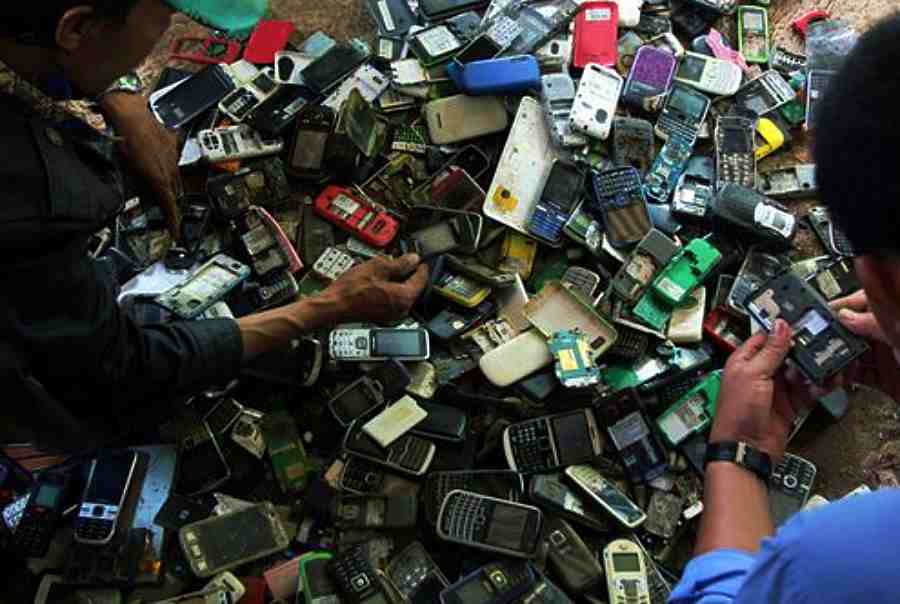Sat 15 October 2022:
By the end of 2022, 5.3 billion phones will be added to the e-waste. The estimate was made by the Waste Electrical and Electronic Equipment (WEEE) forum using data from international trade, which highlights the growing e-waste issue.
Many of us keep our old phones as priceless momentos. However, by doing so, we are ignoring the fact that the phone contains a number of valuable minerals that can be extracted from it and used in recycling.
Then, in addition to other materials, mining is required for things like copper in wire and cobalt in rechargeable batteries.
“Smartphones are one of the electronic products of highest concern for us. People tend not to realise that all these seemingly insignificant items have a lot of value and together at a global level represent massive volumes,” WEEE director general Pascal Leroy was quoted as saying by BBC.
Over 16 billion phones are currently present worldwide, with at least a third no longer in use in Europe.
The WEEE has also highlighted the stark matter of e-waste piling up, and not just from phones. The body says that mobile phones are a tiny part of the 44.48-million-tonne pile of global electronic waste generated annually that isn’t recycled.
Its research shows that washing machines, toasters, tablet, computers and global positioning system (GPS) devices will add 74 million tonnes of e-waste a year by 2030. The report also found that in an average European family, an astonishing five kilogrammes of e-devices per person are currently hoarded.
“But e-waste will never be collected voluntarily because of the high cost. That is why legislation is essential,” Leroy said.
Magdalena Charytanowicz of WEEE said, “These devices offer many important resources that can be used in the production of new electronic devices or other equipment, such as wind turbines, electric car batteries or solar panels — all crucial for the green, digital transition to low-carbon societies.”
It is anticipated that the EU legislation mandating USB-C as the single charger standard for all new smartphones, tablets, and cameras starting in late 2024 will reduce the amount of electronic waste generated in the EU by more than a thousand tonnes annually. Additionally, it will result in savings of at least 200 million euros ($195 million) annually.
Most commonly hoarded
Interestingly enough, mobile phones rank fourth among small electrical and electronic equipment (EEE) that are most commonly hoarded by consumers.
According to surveys conducted between June and September 2022 of 8,775 European households across six countries, the average household has 74 e-products including tech gadgets like phones and tablets as well as appliances such as toaster and hair dryers. On average, 13 are considered hoarded (nine are owned but not used, and four are broken).
The top five hoarded small EEE products in Europe include:
- Small consumer electronics and accessories (e.g. headphones, remote controls)
- Small household equipment (e.g. clocks, irons,)
- Small information technology equipment (e.g. external hard drives, routers, keyboards, mice)
- Mobile and smartphones
- Small equipment for food preparation (e.g. toasters, food processing, grills)
The majority of survey takers (46 percent) said they hang on to devices because they believe they might use them again in the future. Others (15 percent) said they aim to sell hoarded items or give them away, while 13 percent reported the items have sentimental value or might be worth something in the future (nine percent). Seven percent of respondents said they don’t know how to dispose of old item.
SOURCE: INDEPENDENT PRESS AND NEWS AGENCIES
___________________________________________________________________________________________________________________________________________
FOLLOW INDEPENDENT PRESS:
TWITTER (CLICK HERE)
https://twitter.com/IpIndependent
FACEBOOK (CLICK HERE)
https://web.facebook.com/ipindependent
Think your friends would be interested? Share this story!





